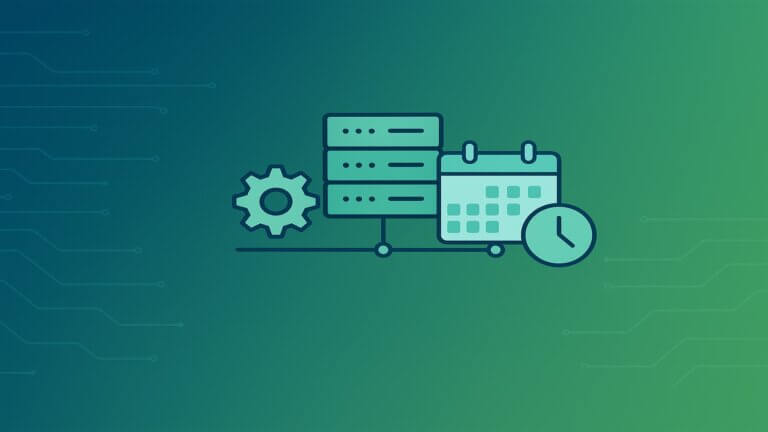As businesses increasingly rely on Amazon Web Services for their cloud computing needs, effective cost management becomes crucial. AWS offers multiple ways to optimize costs, and we have discussed (described, defined, compared) two of them in our previous post: Spot and Reserved Instances. However, there are more options to reduce the cost you spend on your cloud. In this article we will see through the topic of Savings Plans vs Reserved Instances (RIs). This guide provides an in-depth comparison between these two cost-saving strategies, detailing their mechanisms, benefits, and suitability for various workloads. By the end of it, you will be equipped with the knowledge to make a decision on which strategy best aligns with your business needs.
Managing costs in AWS is critical due to the extensive range of services and resources available. Without proper monitoring and optimization, cloud cost can quickly escalate, impacting the bottom line. Implementing an effective cost-saving strategy, such as AWS Savings Plans or Reserved Instances, ensures that businesses can maintain financial control while benefiting from AWS’s powerful offerings.
AWS Savings Plans: Increased Flexibility and Savings
AWS Savings Plans are a cost-effective solution for businesses looking to optimize their cloud spending. These plans provide significant discounts in exchange for a commitment to a consistent amount of AWS usage (measured in $/hour) over a one or three-year term. There are three types of savings plans: Compute Savings Plans, EC2 Instance Savings Plans, and Custom Savings Plans.
1. Compute Savings Plans
Compute Savings Plans are often the most flexible among all AWS Savings Plans. They provide savings of up to 66% on AWS compute usage, covering various services including AWS Lambda, and AWS Fargate. Also, Compute Savings Plan applies to any ECS2 instance, regardless of instance family, AWS region, operating system, or tenancy.
Key Features:
- Flexibility: Compute Savings Plans allow you to switch between different instance types, regions, operating systems, and tenancies without losing your discount. This is ideal for businesses with dynamic workloads that need to scale resources frequently or migrate applications across different regions.
- Broad Coverage: The plan’s broad applicability across multiple compute services makes it easier to manage and optimize AWS costs.
- Ease of Management: With a single commitment, you can enjoy discounts across various AWS services, simplifying cloud cost management.
Ideal For:
- Organizations with variable and evolving workloads.
- Businesses looking to modernize their applications with serverless computing or containerized workloads.
- Companies that require the ability to migrate workloads across different regions and instance types.
2. EC2 Instance Savings Plans
EC2 Instance Savings Plans provide targeted discounts of up to 72% on Amazon EC2 instances within a specific instance family in a chosen region. These plans are slightly less flexible but offer higher discounts compared to Compute Savings Plans.
Key Features:
- Instance Family Specific: Discounts apply to usage within a specific instance family (e.g., M5, C5) in a particular region. This is suitable for businesses with predictable and steady workloads running on specific instance types.
- Higher Savings: These plans offer greater discounts due to their more focused nature.
- Region Specific: EC2 Savings Plans are tied to a specific AWS region, meaning changes to instance types within the same family are allowed, but cross-region usage is not covered.
Ideal For:
- Organizations with predictable workloads on specific EC2 instance families.
- Businesses that do not frequently change instance types or regions.
- Enterprises looking to maximize savings on steady-state applications.
Also, there are Custom Savings Plans, like Amazon SageMaker Savings Plan, which is a tailored solution negotiated with AWS for large-scale customers with unique requirements. These plans offer the most optimized savings based on the customer’s specific usage patterns. These savings plans are applied automatically to your SageMaker instance, no matter what instance family, size, region, or component you use.
Given these points, Savings Plans provide costs reduction by allowing a commitment to a consistent amount of usage over a term. This commitment yields discounts on the usage, regardless of the amount used within the committed level. The flexibility of Compute Savings Plans permits changing instance types or using different AWS services while maintaining cost benefits. EC2 Instance Savings Plans offer savings within a specified instance family and region, suitable for predictable workloads.

AWS Reserved Instances: Maximum Savings for Predictable Workloads
Reserved Instances, as I mentioned before, were the topic, we discussed in our previous article and in case you are in crossroads for the most suitable discount, check out Spot Instances vs Reserved Instances.
Reserved Instances offer significant discounts (up to 75%) over on-demand pricing in exchange for committing to a specific instance type in a particular region for a one or three-year term. There are three types of EC2 Reserved Instances: Standard Reserved Instances, Convertible Reserved Instances, and Scheduled Reserved Instances.
Standard Reserved Instances: These RIs offer the highest discount but the least flexibility. You commit to a specific instance type and can modify attributes like the Availability Zone and instance size within the same family.
Convertible Reserved Instances: These RIs provide lower discounts compared to Standard RIs but allow you to change instance types, operating systems, and tenancy, as long as the new configuration is of equal or greater value.
Scheduled Reserved Instances: These RIs are designed for workloads that need to run at specific times, providing a discount for reserving capacity on a predictable schedule.
Key Benefits of AWS Reserved Instances:
- Highest Discounts: Standard RIs offer the largest cost savings for predictable, steady-state workloads.
- Customization: Convertible RIs allow for changes in instance types and other attributes, offering a balance between cost savings and flexibility.
- Scheduled Usage: Scheduled RIs are perfect for workloads with predictable, time-based usage patterns.

Explore the Differences Between AWS Savings Plans and Reserved Instances
When talking about difference between AWS Savings Plans and Reserved Instances, Compute Savings Plans outperform Reserved Instances in terms of flexibility, as they are applicable across several services and regions. EC2 Instance Savings Plans, while less flexible, are nevertheless useful for predictable workloads. SageMaker Savings Plans automatically apply discounts for organizations focused on machine learning with SageMaker. Standard RIs provide less flexibility but bigger discounts, whereas convertible RIs provide greater flexibility but slightly lower discounts.
Savings Plans usually provide a 66% savings over On-Demand pricing, however Compute Savings Plans offer more flexibility. Reserved Instances offer savings of up to 72 % with Standard RIs and around 54% with Convertible RIs, making them extremely cost-effective for specified workloads.
Savings Plans necessitate a commitment to a consistent hourly usage (USD/hour) over one or three years. Reserved Instances, on the other hand, demand a one- or three-year commitment to specified instance types and geographies, with the option of paying beforehand to maximize discounts. Savings Plans are best suited for dynamic and changeable workloads that demand flexibility, whereas Reserved Instances are excellent for steady-state, predictable workloads with instance type requirements.
Pros and Cons of Each Option
AWS Savings Plans are ideal for organizations needing flexibility and broad service coverage, especially for variable or evolving workloads. However, they require a commitment to a consistent usage amount and can be complex to manage. On the other hand, Reserved Instances provide the highest savings for predictable, steady-state workloads and offer options like Convertible and Scheduled RIs for some flexibility. They require specific instance type commitments and are mainly suitable for EC2 instances, making them less flexible than Savings Plans. By weighing these pros and cons, businesses can choose the best option to optimize their AWS costs based on their unique needs and workload patterns.
Practical Examples and Use Cases
When deciding between wide range of AWS discounts, it’s essential to align your choice with your business needs and usage patterns. For startups and organizations with fluctuating workloads, Compute Savings Plans provide the flexibility needed across various compute services, making them an excellent option. Conversely, large enterprises running steady-state applications can maximize savings with Standard Reserved Instances (RIs), especially if the instance type and region are fixed. These businesses benefit from the substantial discounts provided by Standard RIs.
Modern applications, particularly those leveraging serverless architectures like AWS Lambda, find significant advantages with Compute Savings Plans due to their broad applicability. This makes Compute Savings Plans offer multiple solutions, that are perfect for organizations working in modern, scalable, and efficient serverless environment.
Tools and Resources
AWS provides several tools and resources to assist in the decision-making process. AWS Cost Explorer is a powerful tool that helps visualize and analyze your historical usage and costs, enabling you to identify patterns and predict future needs. AWS Trusted Advisor offers real-time guidance to help you provision your resources according to best practices, optimizing performance, security, and cost efficiency. Utilizing these tools can simplify the assessment process, ensuring you choose the most cost-effective plan aligned with your business objectives.
By carefully evaluating your requirements and utilizing AWS’s comprehensive tools, you can select the right cost-saving strategy – whether an EC2 Instance Savings Plan or Reserved Instance – to optimize your cloud expenditures and drive business growth.
In summary, choosing between AWS Savings Plans and Reserved Instances depends on your business’s needs and usage patterns. AWS Savings Plans offer flexibility and broad applicability, ideal for dynamic workloads. In contrast, Reserved Instances provide significant savings for predictable, steady-state workloads. Leveraging AWS tools like Cost Explorer and Trusted Advisor can help make informed decisions, ensuring you maximize savings while maintaining necessary flexibility and performance. Understanding these differences will empower your business to optimize cloud expenditures effectively and support growth and efficiency in your cloud strategy.
By carefully assessing your business needs, workload patterns, and financial commitments, you can make an informed decision that optimizes your AWS cost management strategy. Taking proactive steps now will ensure that you maximize your investment in AWS while maintaining financial control and operational efficiency.



